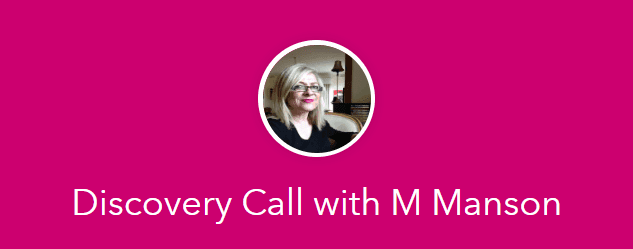 According to research by McKinsey and Co, there are two perennial challenges to making innovation work for an organisation: competition strategies with short-term priorities and integration of the innovation initiative with strategic objectives of the rest of the business. Both challenges have one root cause: lack of original and clear Vision.
According to research by McKinsey and Co, there are two perennial challenges to making innovation work for an organisation: competition strategies with short-term priorities and integration of the innovation initiative with strategic objectives of the rest of the business. Both challenges have one root cause: lack of original and clear Vision.
It is no mystery why companies try to emulate their most successful peers. Apple is today’s all-purpose innovation icon. over 1,500 articles have been written about the company in the past three years and over 40 books have been published since Steve Jobs’ death, inspired by the company’s can-do culture and unique confluence of leadership, talent, strategy and technology. What is less visible and understood is Apple’s unique ability to leverage its supply chain management through collaboration.
Instead of star-struck approach, executives need to take a clear-eyed view to identifying ways to exploit existing assets, both internal and those of potential partners, including technology, organisational capabilities, or business model strengths, all of which are well within the reach of most incumbent companies.
The following insights from Zach Tumin shed the light on how Leaders, on every level can leverage the resources within and outside the organisation to achieve highly competitive results through the Process of Collabortion. At the heart of any collaboration is Vision that answers the core question to getting the support necessary to achieving successful outcomes: “what’s in it for me?”
VISION
Why successful companies have a strong vision – written or implied through cultural understanding? Vision is a very important part of business collaboration and an essence of a company’s success. It holds people’s commitment for the ‘lifecycle of business collaboration’ and motivates them through a ‘shared aspiration’, reminding them ‘Why are we here? What are we trying to accomplish?’ It enables people on every level of the organisation to keep focus on what’s important and prevents distractions with competing short-term priorities.
One of the great challenges of collaboration is to find leaders who are capable of framing these issues to connect multiple parties who would otherwise disagree – to find alignment to bring and come together to make a difference.
PLATFORM
Platform is a clearing where people can come together, to find each other, feel safe, communicate, exchange views, news and support; and enter in collaboration. SM sites are a classic example of collaboration platforms. ‘I’ll bring the icing, you bring the cake’. A Platform could be anything from a park, to a computer platform – Xbox, GoToMeeting, Skype or Facebook; a networking event, or a café. It can be physical or virtual.
In business, Platform is the vital infrastructure, with rules, essential for collaboration to occur. The problem is that most of the corporate Platforms don’t work. Most likely they are missing one or more of the key elements: shared purpose or sense of security. It’s not enough to create a Forum on intranet or create a ‘Thursdays Think Tank’. A successful platform needs written or implied purpose that is relevant to all individuals and provides personal safety, offers ‘benefits’ of belonging and mostly, it has a clear and shared purpose that is endorsed by Leaders.
InnoFuture’s DOJO is an example of a business collaboration, suitable for small to medium size organisations who need to communicate shared vision, common understanding of innovation and want to engage employees in ‘collaborating’ to achieve outstanding results.
RIGHT-SIZE-THE-PROBLEM
There is the whole school of thought around design thinking that proposes methodologies to define the ‘wicked problems’. Right-sizing the problem is essential to making progress. The first set of ‘problems’ don’t have to solve the whole problem or instantly achieve the Vision. The objective is to get started and show friends and adversaries – that it’s worth investing in and getting involved and have people coming with the resources to be able to return some value and show it’s doable.
Across the lifecycle of business collaboration – problem is redefined several times, realigning the vision, right-sizing the problem again. There are many techniques to show the results – pilot, demonstration, etc. What would be a really cool thing to do is to get people think: “Wow if that could scale!”
The 21st century is no longer about command and control. It’s about being nimble. It’s about collaborating to build new value chains that are capable of leveraging their diverse, specialist capabilities, resources and talent, to create outcomes that would not be possbile by only mobilising internal resources or even pushing existing supply chains for more commitment.
In the final Part 3 of this series we will look at how to, now that you have a Vision, Platform and have Right-Sized the Problem, you can “Add People”, secure your ‘political support’, and deliver on performance – so everybody in your business collaboration ecosystem gets paid and paid well.
 Zach Tumin will be speaking exclusively at an InnoFuture Event in Melbourne only on October 25. It is a first hand insight into the new Collaboration Model for more effective innovation and growth in the 21st century.
Zach Tumin will be speaking exclusively at an InnoFuture Event in Melbourne only on October 25. It is a first hand insight into the new Collaboration Model for more effective innovation and growth in the 21st century.
Find out how, from business race, to space and politacl race, collaboration delivers outstanding results, if you apply a system. Are you collaboration-ready?


